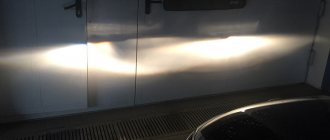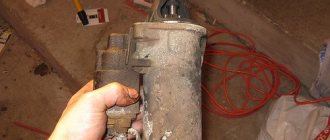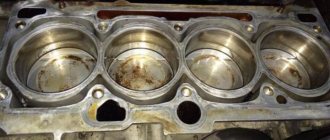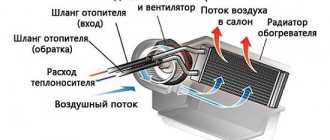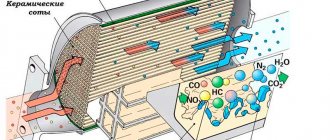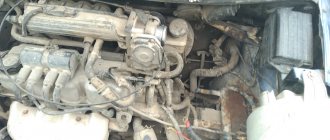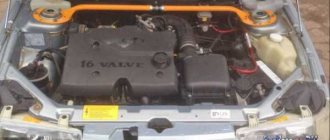Who should switch the car to gas? Expert advice
Photo: Moscow Agency/Anton Kardashov
The technical director of the group, Alexey Bankovsky, told Moscow 24 about the pros and cons of using gas equipment for passenger cars and subsidies for their installation. He also gave some tips on choosing components.
The expert immediately noted that we were talking about compressed natural gas (methane). An alternative is liquefied petroleum gas (propane-butane), but no subsidies apply to this type of fuel.
Bankovsky believes that only those who use their cars a lot should install gas equipment.
“It is beneficial to those carriers and those individuals who use cars quite a lot. For a single consumer who travels 10,000 kilometers a year, this equipment, even with a subsidy provided by the state, will be of no interest,” the expert said.
He explained that the benefits of converting a passenger car to gas depend on the region in which the vehicle is operated. In his opinion, there are not many gas stations where you can buy gas.
“The question is that if we install gas equipment on a passenger car, then it drives 150–200 kilometers. Then he will drive on gasoline, but we are talking about saving money. It all depends on the region of operation: if there are a sufficient number of gas stations in this region and they allow you to refuel, then yes. If we are talking about a region like Moscow, where there are 2.5 gas stations, then only if the car operates within the coverage area of these stations,” Bankovsky noted.
He emphasized that some categories of cars do not provide for the installation of gas equipment. These are modern foreign passenger cars running on diesel fuel and cars with a direct fuel injection system.
“If we talk about the people's car - the Skoda Octavia, Hyundai Solaris, KIA Rio - cars of this class are completely easily converted. The domestic auto industry is converting to methane without any problems,” the expert said.
If we are talking about modern systems, about installation in certified service centers, then there are no such obvious disadvantages. Because the systems are equipped with basic security systems. There is protection against leaks, protection even against explosions, even if the car gets into an accident and catches fire. Alexey Bankovsky
Technical Director
The expert explained that equipment that meets modern safety requirements is quite expensive and in this regard the subsidy will be extremely useful. When choosing one, Bankovsky advises giving preference to Italian systems, for example OMVL.
When choosing the cylinder itself, you should pay attention to its type.
“As a rule, cylinders of the second and third types are used for passenger cars. These are either metal-composite cylinders (the second type) or aluminum composite cylinders,” Bankovsky noted.
He also emphasized that a Czech manufacturer has now entered the market, but it makes cylinders from steel, which significantly affects their size and weight.
Earlier, Russian Energy Minister Alexander Novak proposed to Deputy Prime Minister Yuri Borisov to double the share of subsidies from the budget for converting cars from gasoline to natural gas fuel. This anti-crisis measure involves an increase from 30 to 60%.
In addition, it is assumed that 30% of the costs will be allocated by Gazprom. It is known that this proposal is contained in a letter to the Deputy Prime Minister dated April 17. The press service of the Ministry of Energy confirmed Novak’s initiative. Borisov's representative told the publication that the government supported the minister's proposal.
According to Novak, thanks to the transition to the use of gas motor fuel, the costs of motorists who will not need to buy gasoline and diesel will be significantly reduced.
The minister proposes to extend support measures to small and medium-sized businesses and citizens, including the self-employed. As a result, vehicle owners will only have to pay 10% of the cost of the car for gas.
Is it worth converting your car engine to gas?
The technology for using methane gas as a vehicle fuel appeared in the middle of the last century. Initially, such gas-powered cars were not reliable, and such a system itself did not provide adequate safety for the operation of the car. Only in the nineties did economical, reliable and safe gas installations appear, which were successfully used by domestic car owners. In this article we will talk to you about whether it is worth converting your car to gas, what are the advantages and disadvantages of this technology.
Which gas is better?
There are different types of gas fuel – methane and propane-butane. The most common choice is methane.
“Propane-butane has a second hazard class, because it is heavier than air, and methane is lighter, so this year it was transferred to the 4th hazard class - it is less dangerous,” says Mikhail Likhachev.
Director of the Research Institute of Energy Efficient Technologies of KNRTU-KAI Rishat Salakhov calls methane a cheaper fuel compared to gasoline, diesel fuel and compared to propane-butane.
The advantage of propane is that this gas is easily liquefied, the cylinders are quite light and allow you to transport a lot of fuel. However, in terms of efficiency and environmental characteristics, propane is seriously inferior to methane. “Of course, methane is more difficult to store and transport, because today there are only two ways to install it in transport,” says the expert. — The first is when the gas is in cylinders under high pressure up to 250 atmospheres. In this case, you have to sacrifice the carrying capacity and range of the vehicle, which, however, is quite acceptable for some types of equipment, for example, utility vehicles. The second method involves liquefying gas (LNG) at a very low temperature of -170 degrees Celsius. This is a fairly expensive technology, but very promising. Now, with cheaper materials and technologies, it is widely distributed throughout the world.”
Prices for gas and gasoline for cars
20 years ago, HBO cost a penny, and propane-butane was half the price of the cheapest gasoline. This is what served as the basis for a broad campaign to deploy the infrastructure of gas filling equipment and LPG installation stations. But today, the components of the power system have changed radically, the materials have changed, which has led to an increase in the cost of the installation itself.
It is impossible not to take into account gasoline prices, at which the transition to gas was relevant, even more relevant than now. Fuel consumption, which also cannot be ignored, for a car running on gas increases by 18-22%, which means that there is certainly no need to talk about a triple benefit. There is no escape from this and this is dictated by the very principle of working on gas. Thus, in Moscow today the price of 95-grade gasoline is almost twice as high as the price of gas for cars. Under these conditions, one cannot ignore the payback of the gas cylinder installation itself. If we approach the issue from this side, then the payback for LPG on a budget sedan will occur only after 20-22 thousand km. If you install gas on an SUV or minibus, the system will pay for itself faster, for about 15 thousand, depending on fuel consumption. It turns out that the older and more power-hungry the car, the more profitable it is to install an LPG. By the way, the equipment itself will cost 28-30 thousand rubles.
Bad gas for a car
But there are also plenty of negative aspects. The most important disadvantage that must be taken into account when converting a car to gas fuel is that there is practically no gas at gas stations. Theoretically, it exists, but getting to the distribution can be difficult even in large cities, not to mention the provinces. Therefore, the infrastructure of gas filling stations is absent or is in an embryonic state. Further gas punctures can be listed literally on the fingers, there are not many of them:
- space in the trunk is significantly reduced, LPG takes up a lot of space, about 35% of the trunk volume, depending on the car model and brand of LPG;
- the minimum loss of acceleration dynamics with fully serviced and tuned equipment is about 10%;
- sensitivity of HBO to borderline low and, especially, borderline high temperatures; danger of gas leakage.
The conclusion that suggests itself is quite simple - it is rational to use LPG only in cases where the car engine has an ancient design, high fuel consumption, and the car is used for a long time, often all year round. But only if it is possible to use a developed public health service network. Choose fuel that is affordable and rational, then the car will last a long time and the costs of its maintenance will be reduced.
Let's talk about the benefits first
A gas car, the advantages of which are recommended to be considered before upgrading the car, will cost less, since the described fuel costs less than the alternative, and this will never change. Traveling with your pet will cost half as much.
If you decide to switch your car to gas, be sure to consider the advantages before doing so. For upcoming long trips, you will be able to fill the tank and take the cylinder at the same time, this way you will increase the distance between which you will have to look for a gas station. This will make the trip much easier. The octane number is significantly higher, which reduces the risk of detonation and stress on the piston system.
A gas car, the pros and cons of which are assessed before switching the car to a new type of fuel, turns out to be more environmentally friendly, since the fuel is different. Emissions into the atmosphere are significantly lower than when using the usual alternative. When converting a car to gas, the pros and cons must be considered beforehand.
Propane burns better in the engine and therefore there is no soot left on the parts, it does not remove oil from the cylinders and, as a result, the engine does not wear out longer. Car parts, such as spark plugs, will last much longer without replacement when using the described fuel, and the service life of the oil increases by one third.
If you are interested in car translation, it is recommended to consider its pros and cons in advance. For example, when installing LPG, you will be able to use two types of fuel; gasoline has not been canceled. You can use more than just gasoline. This is very convenient if you travel long distances and you are not aware of the availability of appropriate gas stations in an unfamiliar city. During the journey, you can switch the car to fuel mode - gasoline. Despite all the rosy picture, HBO also has its drawbacks.
